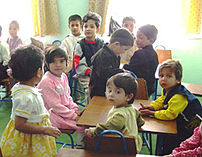August 28th 2008
Disrupting Class. How disruptive innovation will change the way the world learns. Clayton Christensen, Michael Horn & Curtis Johnson.
 Image via Wikipedia
Image via Wikipedia Disrupting Class. How disruptive innovation will change the way the world learns. Clayton Christensen, Michael Horn & Curtis Johnson. 2008 ISBN 9780071592062. Rocket Builders most influential author, Christensen, with his co authors has taken his theory of disruptive innovation and focused on the education sector. The authors do not lay blame but with Christensen’s laser sharp analysis, peel back all the root causes of public perception and changing goal posts for education and what it has done to the institution over time. He then goes on to explain how classic disruption theory – which starts with non consumers and then slowly moves up the competency level as the incumbents are forced to retreat to higher value activities is already progressing in education. He predicts that by 2020, disruptive innovation will hit that 50% mark to turn the tables on other methods (monolithic education in this case) . They show how trying to bring the disruption inside present institutions can not succeed due to the constraints that are already in place. His statements ring true as we have seen the impact of disruption on public and private sector already.
Since his team always does their homework, you are exposed to fascinating research on the impact of verbalization on new borns up to 3 years old. They explain how that is an academic headstart any parent can give their child now. He posits that early kindergarten (after 3 yrs old) and other high priced interventions are doomed to a limited success rate. As well he quickly exposes the paucity (weak techniques and theory) of real research in education since it all to often stops short of causality ( I can certainly testify to that) . Then he explains how computer based education methods are already changing and adapting to the needs of a student centric model. He illustrates how Howard Gardners multiple modes of learning could be accomodated in the disruptive model.
Once again there is a second book within the book with copious research notes in every chapter. I am one of those professional educators who packed it in based on what I experienced as the overall futility of real change in education. Now this book has reawakened my interest in change in the education market – moving to a student centric model. If you have children or grandchildren – you need to buy and read this book. If you are in the e-learning market – it is required reading. Thank you McGraw Hill! I really liked it and it is as always an easy read with loads of detail if you want it.
Related articles by Zemanta
Similar Posts:
- The Innovator’s Prescription. A disruptive solution to healthcare. Clayton M. Christensen, Grossman & Hwang.
- The Innovator’s DNA. Mastering the five skills of disruptive innovators. Jeff Dyer, Hal Gregersen, Clayton M. Christensen
- Seizing The White Space. Business model innovation for growth and renewal. Mark W. Johnson.
- The Innovators Guide to Growth. Putting Disruptive Innovation to Work. Scott Anthony, Mark Johnson, Joseph Sinfield, Elizabeth Altman
- The Prosperity Paradox. How Innovations Can Life Nations Our of Poverty. Clayton M. Christensen
Category: Strategy, Technology Industry
One Response to: “Disrupting Class. How disruptive innovation will change the way the world learns. Clayton Christensen, Michael Horn & Curtis Johnson.”


![Reblog this post [with Zemanta]](http://img.zemanta.com/reblog_b.png?x-id=df1dd7b3-ec0a-48d3-b0fe-4662c2cf3e52)


Thanks for your insightful comments and compliments. Much appreciated. I do hope it inspires you to create meaningful and positive change again!